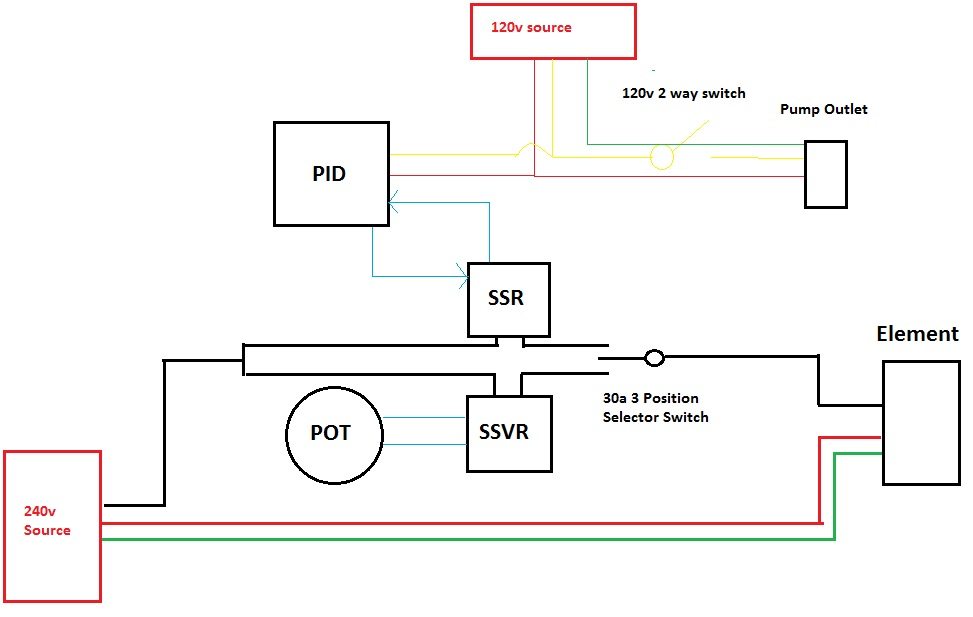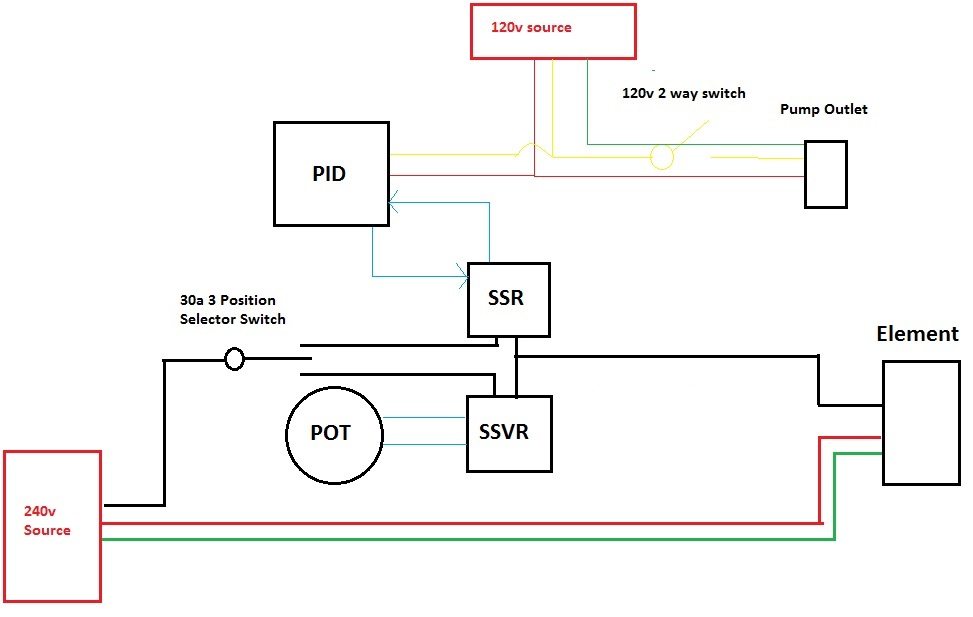Howhownow
Well-Known Member
Ok, so I have been doing quite a bit of reading and learning as I build my 240v electric system and evaluate my current situation and control box options.
I have seen many versions of this question asked many different ways... but I still can't find a satisfactory answer and explanation that fits my specific situation (though mine seems like it should be pretty common). I'll try to be as simple in my explanation as I can. I have a basic electrical understanding, but am by no means an expert.
I would like to draw power from my old dryer plug that has a NEMA 10-30 receptacle, 3 wire config back to breaker box. The non-hot leg runs to what I believe is the grounding bus (bare copper coming back from other circuits). Trying to avoid running new lines to/ replacing the plug for complicated reasons.
My plan was to go from this plug to a Spa box GFCI, hard wire that to a control box(make/model TBD, but I plan to buy one off the shelf), and use that to power a 5500w element, pump, and whatever electric components in the box. The Spa box I purchased has clear directions for both 3-wire and 4-wire input configurations.
Many control box makers state that their units will not work with GFCI protection if the power source (to GFCI breaker) is 3-wire. This throws off my whole plan (and I would imagine the plans of anyone trying to use a dryer outlet and a control box yet not be electrocuted).
My question is- for what reason does the 3-wire config not work with a Spa box and control panel?
A) Does it have to do with the fact that the control box components (PID, lights, pump power) 'borrows' from one of the hot legs, causing an unbalanced return and nuisance trips on the GFCI? Would a controller using a second 120v input (such as the brew-boss) remedy this by dedicating the 240 circuit to the element?
B) It has nothing to do with controllers, Spa box GFCIs just don't work with 3-wire configs. (If this is the case, I am struggling with the reason why. This is my electrical inexperience).
C) Does it not work for another reason having to do with the way GFCIs work that I'm not aware of. If so... please explain plainly.
D) WTF am I talking about??
I have seen many versions of this question asked many different ways... but I still can't find a satisfactory answer and explanation that fits my specific situation (though mine seems like it should be pretty common). I'll try to be as simple in my explanation as I can. I have a basic electrical understanding, but am by no means an expert.
I would like to draw power from my old dryer plug that has a NEMA 10-30 receptacle, 3 wire config back to breaker box. The non-hot leg runs to what I believe is the grounding bus (bare copper coming back from other circuits). Trying to avoid running new lines to/ replacing the plug for complicated reasons.
My plan was to go from this plug to a Spa box GFCI, hard wire that to a control box(make/model TBD, but I plan to buy one off the shelf), and use that to power a 5500w element, pump, and whatever electric components in the box. The Spa box I purchased has clear directions for both 3-wire and 4-wire input configurations.
Many control box makers state that their units will not work with GFCI protection if the power source (to GFCI breaker) is 3-wire. This throws off my whole plan (and I would imagine the plans of anyone trying to use a dryer outlet and a control box yet not be electrocuted).
My question is- for what reason does the 3-wire config not work with a Spa box and control panel?
A) Does it have to do with the fact that the control box components (PID, lights, pump power) 'borrows' from one of the hot legs, causing an unbalanced return and nuisance trips on the GFCI? Would a controller using a second 120v input (such as the brew-boss) remedy this by dedicating the 240 circuit to the element?
B) It has nothing to do with controllers, Spa box GFCIs just don't work with 3-wire configs. (If this is the case, I am struggling with the reason why. This is my electrical inexperience).
C) Does it not work for another reason having to do with the way GFCIs work that I'm not aware of. If so... please explain plainly.
D) WTF am I talking about??
















![Craft A Brew - Safale BE-256 Yeast - Fermentis - Belgian Ale Dry Yeast - For Belgian & Strong Ales - Ingredients for Home Brewing - Beer Making Supplies - [3 Pack]](https://m.media-amazon.com/images/I/51bcKEwQmWL._SL500_.jpg)











































